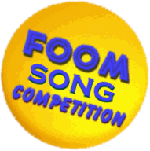 |
SCALA SONGWRITING WORKSHOP IMPROVING THE RAW MATERIAL Joiners Arms (17/1/06) |
 |
This workshop came about as a result of few comments I made after judging a FOOM heat in 2005. They are intended as suggestions on how to improve an existing song. Once you have your lyrics and and basic musical structure, how can you improve this raw material?
Most of the comments below are about the light and shade of a song or piece of music, and increasing the dramatic impact of your song. There are many devices that assist in increasing the dramatic impact, but most of the examples here focus on varying tempo, alowing for pauses (silence) in your arrangements, and experimenting with volume. Many very simple songs that sound quite pedestrian when sung at one pace and volume, become much more interesting when tempo and volume are exploited to strengthen the message you want to convey – lyrically and/or musically.
I hope you find the notes below useful. I am aware that the songs I have cited as examples reflect my own musical tastes, and there will undoubtedly be many examples of more recent songs, in other musical categories, that make these same points just as well. (I hope to put this article on the web and use it as a developing resource so if you email me with examples I will add them to the list. michaelc@chariot.net.au)
The Beginning (how to start the song) – MAKING AN IMMEDIATE IMPACT